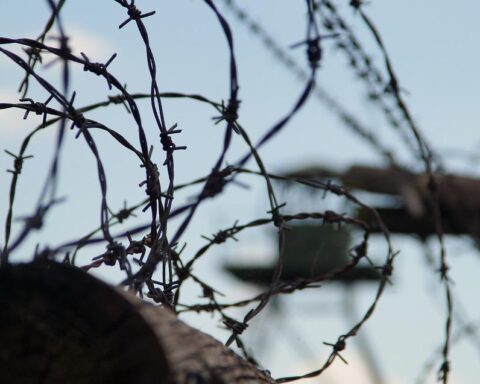Not all martial arts systems are created equal. When I teach martial arts, my first priority is to make it useful immediately. For the real world. Here are some things every martial artist should know, which might not be taught everywhere.
Your Instructor May Not Know What They’re Talking About
The first hard lesson you should get into your skull is that many, many, many martial arts instructors have exactly zero real-world experience using the things they are teaching. This is a fact. Martial arts is mostly theory in many schools. People begin the long and arduous process of learning how to defend themselves and they take what their teacher says at face value. And why shouldn’t they? There’s a perception that someone who is good enough to teach knows what they’re talking about. Sadly, most people don’t. The hardest pill to swallow is going to be spending a lifetime learning techniques and concepts for self-defense from an attacker, only to find out that when it comes time to put it all to use, none of it works. It happens all the time. Bullshido is chock full of videos of people getting their asses handed to them because they thought they knew. Never assume something is going to work in the real world. The only way to find out for real is to actually try it against a real attacker or in a realistic setting.
The Street Is Violent, And It Requires A Violent Response
Another does of reality is that martial arts may not adequately prepare you for the actual violence of the real world. Sure, we practice martial arts from the safety of the dojo, but if you don’t properly train your mind to confront actual violence, you’re not getting all the training you actually require to handle an attack. I’ve got news for you, if you hate violence and you think you can meet violence with nothing less than violence, you’re in for a rude awakening. People prey on those they perceive to be weaker. Those who are violent only understand violence. You have to speak their language. There’s a saying by Lin-Chi: “When you meet a master swordsman, show him your sword. When you meet a man who is not a poet, do not show him your poem.” Train for the mental game as much or more than you do the physical. Do not neglect it. The real world is fucking brutal. If you don’t believe me, read these brutal real stories put out by the awesome Mark Hatmaker, who runs Extreme Self Protection.
The Best Self-Defense Is Avoidance
We train in martial arts to be able to handle a variety of attacks. These are all centered on what to do when the action has begun. But very little is done to handle what happens before that. De-escalation techniques are a valuable resource, and I’m glad to see that these are being taught more and more. But what often gets neglected is how to recognize danger before it presents itself. Knowing how predators think, how they pick their targets, where they operate. These are all things that should be taught. Avoiding an altercation is the best defense possible, with de-escalation coming in a close second. The physical stuff should be a last resort, and you should use it to facilitate the final step: escape. 90% of staying alive is not putting yourself in situations where you have to use violence. Be aware of your surroundings at all times. Understand choke points. Look for the exits. Be vigilant.
What You’re Learning Is Probably Not Enough
This goes along with the first thing I mentioned. Martial arts evolves, and since the explosion of mixed martial arts, the UFC, Pancrase, Pride, etc., it’s evolved faster than ever. This is because there is a more realistic environment by which techniques can be put through the crucible. They can be tested by fire. We know through hard-learned experience that well-roundedness is preferable to specialization. If you want to maximize your ability to stay alive, you need to be solid on the ground and standing. Bruce Lee was right in his assessment of the “classical mess.” It’s insufficient. While you may love your dojo or your traditional style, don’t make the mistake of thinking it can get you through every situation. It probably can’t. Supplement and supplement some more.
Functional Martial Arts Is Fucking Painful
A caveat to the violence of the real world: preparing yourself for it requires that you acquaint yourself with pain. Again, Bruce Lee was correct when he said you are going to have to get hit. You must know what it’s like to be in a real fight if you are to prepare for one. This is why people who have never experienced real aggression – on the street or in the gym – are at a tremendous disadvantage when shit hits the fan. This doesn’t just apply to standup. It especially applies to the ground. Yes, Brazilian Jiu Jitsu is painful. You get submitted. You get choked out. You think you know what pain is, until you step onto the mat with a catch wrestler. If you want to test your mettle, go to catch wrestling clinic. You’ll find out what real pain is. And you’ll be a better martial artist for it. Pain is not something you want to get introduced to for the first time on the street.
Conditioning Is Your Best Technique
You can train your whole life, you can learn 1000 techniques, and yet if you’re not physically conditioned for the rigors of actual battle, you will lose. If you gas out, none of what you know is going to be useful to you. What good is that punch or kick if you don’t have the energy to execute it? Don’t make the mistake of thinking you’re going to knock someone out immediately. Quit living in Fantasy Land. Condition your body. Physical combat is taxing, that’s why boxing and wrestling are so demanding. Don’t rely on techniques alone. A well-conditioned athlete can out-fight a more skilled person simply because they have conditioning in their corner. Get your ass to the gym and build functional strength and endurance. Consider it another aspect of what’s required if you’re to be any measure of successful when it comes to self-defense.
Conclusion
Follow my advice so your ass doesn’t end up on Bullshido.










